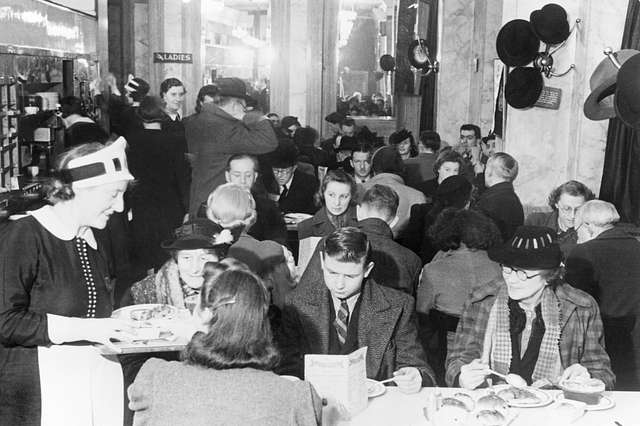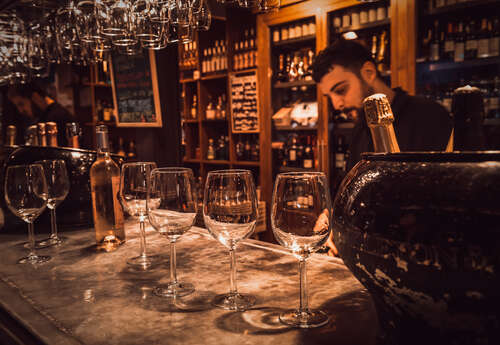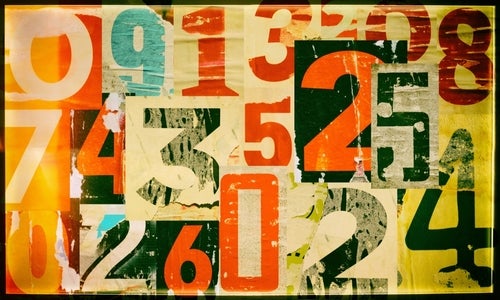
One of the most prominent commentators on natural wine has grown increasingly uncomfortable with the direction the counter-vinicultural scene has taken. Can it survive? Or is great natural wine dead?
As the late and very great Barolo producer Teobaldo Cappellano said, “The more there is fake, the more we need real.” And that was how natural wine, the overnight sensation that took more than 40 years to get there, became such a force to be reckoned with.
But I knew nothing of this when, tired of the impoverished struggling artist life, I experimented with wine sales. It was the 1990s, and I was sitting cross-legged on the office floor of my new employer, a New York City wine importer, tasting through samples—two of them, early vintages of Clos de Tue Boeuf, a producer I’d never heard of before. The bottles were cheapside, the label minimalistic. What was inside stunned me.
The wine had personality, life, and freedom. I didn’t know how else to describe it, but it was exactly what I didn’t know I was looking for. “If you don’t bring this in,” I, the rube novice, told my boss, “you’re an idiot.” At that moment in my formation, I began to define my criteria for great wine. One of the most critical considerations was its power to provoke emotion.
The desire for truth
Around the turn of the millennium, natural wines began to creep over the Atlantic from France. Following Puzelat, the Rhône’s Dard & Ribo soon became available. These wines were extraordinary, and I happily tracked them down in the United States, as well as finding more of their ilk at my standby Parisian wine bars, Le Muse Vin (now defunct) and Le Verre Volé. But when I landed in the Loire in 2002—years after leaving my brief stint in wine sales—all hell broke loose for me. I discovered something the world needed to know about, and as a wine writer there was no turning back.
That winter I arrived in Angers to report on the very corporate, hushed Loire Salon. But I made sure to land a few days beforehand, to go to a tasting that was rumored to be sensational. This was the third edition of La Dive Bouteille, one of the world’s very first natural-wine fairs. Merely walking through the icy parking lot was enough to pierce my down coat with a dagger of excitement; something was definitely going on. The vibe was more like the 1967 hippy rally Human Be-In than any wine tasting I’d been to. As I advanced— walking past clumps of fast-talking French wine-bar owners, many of whom I recognized and who confusedly nodded at me, wondering, Who is she? (after all, this was pretty much an all-French affair)—I heard the slurping of oysters around a mound of craggy bivalves in the reception. I paid something like €6, was handed a glass and a short list of winemakers. Inside, it was petite—cute, in fact—with maybe 30 winemakers (the current Dive hosts close to 200). The idea was that each of the local natural-wine makers invited one friend from another region. In that moment of the French saving the world of wine from Parkerization, the farthest away was Corsica.
The wines, poured from unpretentious beakers, were cloudy, fizzy, and vibrant. All were nubile, a preview of what would eventually be bottled. Not so long ago, none of them would consider bottling and selling a wine a mere four months out of harvest, as is common today. All the era’s vinous rock stars were there—Thierry Puzelat, Jean Dard & René Ribo, and other pioneers—pouring and drinking through the day. These were wines made by the people, for the people. Wines that came from organic viticulture, wines that had as their ideal nothing added or taken away. What started off as the seeds of the movement in the late ’70s had taken hold, and by the time I was at that initial Dive (the first of many), it was in first leaf. To paraphrase Dylan, we were young, and it was our world.
To put it all into global perspective, those were the peak years of the international style, when so many wines were powerful, oaky, and chewy. There was one natural-wine maker in California (Tony Coturri) who didn’t even know he was natural; he was just being a hippie. There were a few traditional holdouts in Italy, but mostly the country made undrinkable mass-produced blockbusters. No natural wines were being made in Greece or Spain. There were no natural wine bars in Burgundy, none in Copenhagen, and none in New York City. But the seeds were germinating. Before social media, trends took time to cook, rather than coming to a rapid boil the minute they were put on the stove. But ever since Facebook, Twitter, and especially Instagram, the genre became a seemingly overnight sensation. Some mistook the craze for a fad. But it wasn’t. As Cappellano believed, the delight of natural wine was built on a very human motivation: the desire for truth.
Growing pains
It’s tempting to descend into sentimentalism, to wax poetic about the days when the wine revolution was fresh and offering alternatives to wines that were, at best, concentrated, jammy, and heavily oaked; at worst, overmanipulated, massproduced crap from chemical viticulture. But today, 40 years after its debut, the natural genre is stronger than ever, as are some of the wines as well. The rub is that its phenomenal success has spurred on low-rent knockoffs, such as recent supermarket versions that include a machine-picked “orange” “natural” wine from Romania. Recently tasted, it was caustic: I had to feel pity for those who grabbed it to go with their dinner. From Spain, there’s the “Organic is Orgasmic” product line. But how natural are these, really? That’s dubious. However vibrant it may be overall, the previously innocent and idealistic world of natural wine is experiencing problematic growing pains.
Among the issues: those looking to launch their celebrity through social media, using wine as their platform; cutthroat importers (previously seen only in more conventional wine circles) trying to grab the wines (even the bad ones) and poach from their colleagues; and tribal infighting about which wine is superior—zero/zero or minimal. For the first time in the idealistic natural-wine environment, people are entering the market not just to make money but to make a killing. At least in the US, the first natural-wine importers brought with them a passion and idealistic values. We are now in the era of the capitalists, chasing the market.
Then there are the wines themselves. As is inevitable with the current high demand, quality is suffering. There are simply not enough of the exquisite ones to go around. Many natural wines today are being bottled and sold too quickly. In the early days of La Dive, no winemaker there would have bottled their juice a mere four months from vintage. Today, it’s common. Many are made to a style—murky, leesy, and unfinished—one of the reasons for the growing number of glaringly faulty wines, giving natural-wine haters plenty of arrows for their target. I’m not alone in my observations; nearly every conversation I have with those who remember a previous vin naturel generation, in whichever country, seems to descend into lamentations.
With apologies to Tolstoy for adapting his most famous line, every unhappy wine is unfortunate in its own way. But goût de souris, mouse taint, is surely the most unfortunate way. The fault experienced as a taste is actually a retronasal smell that explodes like a stink-bomb at the back of your tongue, filling the mouth with the vilest kombucha-gone-wrong aftertaste. Today, it’s pandemic.
This mousiness is connected to individual saliva pH—a proportion of the population can’t even taste it—but some 80 percent of us are still cursed with its inevitability in many natural wines. Telling a winemaker that his or her wine has it takes the kind of courage it takes to tell someone that they have halitosis. While I’ve yet to see a winemaker proudly present a wine and pronounce, “Mouse!”, many new drinkers seem to have a positive Pavlovian response to it. Tony Coturri, the long-time Sonoma natural-wine maker, astutely calls this a “fetishizing of faults.”
Here’s a perfect example: An importer I know here in New York City brought some bottles for me to taste. I had asked for Aligoté, and he brought one from a producer whose wines I know to be uneven. I tasted and grimaced. Let’s just say there was a whole family of mice in that glass. “Souris,” I said. He laughed and shrugged. “The kids like it,” he replied. The causes for the taint are not so obvious. But instead of celebrating it or ignoring it, we desperately need to conduct some proper research. The Australian writer Mike Bennie is one of the many colleagues with whom I’ve bemoaned the situation. His observations were completely in step with mine: “For the first ten years of my career, it was ‘the unicorn taint’— one I couldn’t learn about, because nothing had it,” he said. “Now, I see it almost daily.”
Mouse taint, alas, is not the only common flaw. Etheliya Hananova, co-owner of the new, one-Michelin-star Comice in Paris and a longtime champion of natural wine, sees an abundance of “high volatile acidity, very prominent reduction/ oxidation, goût de souris, et cetera.” But what stuns her as much as the faults themselves is their acceptance. “People at the tasting were loving them, and I see those very wines on the hip wine lists all the time.” She has begun to ask herself, “Maybe, I’m getting stodgy?”
Reduced to a style
I’ve considered the same thing about myself. Must I accept what I cannot change? Can so many of us who have helped nurture natural wine into today’s world, who believe that natural is an ideal to strive for rather than a dogma or a style, have failed? When I see an importer shouting out this or that fabulous wine, when all I can taste is a whiff of fruit resolving into putridness, I have to call it undrinkable, just as I did all those Parkerized wines. Fake news has infiltrated the higher moral ground of natural wine.
Even over at the Mary Celeste group of stylish Parisian restaurants, wine director Josh Fontaine concurred that there’s now a larger market for flawed wines, the root cause in most cases being where the only criterion is the added sulfur dioxide level. “All too often, people buy and are served flawed wines because neither the salesperson nor the sommelier can recognize the flaw. To them, it’s just generic ‘natural-wine taste.’”
The notion of natural wine being reduced to a style is offensive. After all, natural wine was to some extent a reaction against market-driven products. Diversity and unpredictability are part of its nature. There is always a need for simple and easy vins de soif—a term that, at least outside France, has morphed tragically into glou-glou, easy-drinking, low-tannin wine akin to fruit juice, with or without mouse, with or without plenty of earthy reduction. For many, this style of wine is the only one that is natural. But what about wines of structure? Food wines? Wines that age? Those, these days, seem suspect to many new drinkers in particular. And when it seems to be the only style of wine celebrated by someone as high-profile as the rapper Action Bronson, we can get into trouble.
Bronson—a sweetheart, by the way—is the beer-drinking, weed-smoking, rapping television star who has been hailed as an outsider wine expert and who has done a lot to boost natural wine’s profile. In his book, F*ck, That’s Delicious! Bronson has equated structured and ageworthy with conventional; fresh and murky with natural. He has turned a new generation on to natural wine—which is terrific—but one downside is that he might also be one of the reasons people are waltzing into wine shops asking for a cloudy or a fucked-up wine—because, of course, that’s natural.
Hijacked by faddishness
All of this leaves me to lament the decline of the natural-wine Utopia. It seems as if the wines I’ve been drinking and the community I’ve loved have been hijacked by faddishness. Distributors selling messed-up wine as the hot new Instagram star are cheapening the whole situation. My fear is that while they elevate this “style” as being real natural wine, there is no pressure on the offending winemakers to clean up their game. I circled back to the maker of my gateway drug in 1998, Thierry Puzelat, for his reflection on the current state of affairs. “For winemakers,” he wrote to me from his perch in Les Montils, “the biggest mistake is to forget their job: making good wine. In our world, where everything is immediate, drinkers and winemakers don’t generally understand that wine and nature need time.”
Taking time: What a strange concept to digest for a social-media generation with an attention span that doesn’t seem to last any longer than it takes to post the next snapshot. But my Australian friend Mike Bennie helped me restore some perspective. He reminded me that all is not lost. “There’s still a global community that is warm, embracing, explorative, unifying, and beautiful.”
Historically, natural wine was the market reset for a wine world often obsessed with control through technology. The wines made from organic viticulture, with no additives or only minimal SO2 additions, are for me the only ones that may qualify as great; and they will increasingly become the standard by which fine wines are evaluated. The impact of the little movement has been out of all proportion to its size. It has given the world a new/old color of wine—amber; it has made winemakers rethink ripeness and drinkability; it has provoked more discussion of wine flaws and faults; it has diminished the importance normally attached to clarity; it has stimulated reflection on additives, many producers having reduced their added sulfur dioxide levels; and it has broadened the range of alcohol, fruit, structure, and tannin in wine.
Despite all the distracting surrounding noise, superlative, earth-moving natural wines still exist—they are just a little harder to find. These are ones that inspire an emotional response. They are not just labels to collect but are wines that can transport and change lives. I’ve seen it happen. I like to believe that more new drinkers will stop accepting furry wines or shrill under-wined acids just because someone gave them the false notion that natural wine has to be flawed. I hope they will begin to protest whenever a damaged wine is passed off as cool. I want a world where vins de soif sit comfortably alongside vins de garde; where wine isn’t a style but a drink of beauty. Wine, after all, is one of the most powerful and enduring symbols of society and culture. We will survive the current bumpy buzz and faddishness to reach a happier and more profound sanity.






